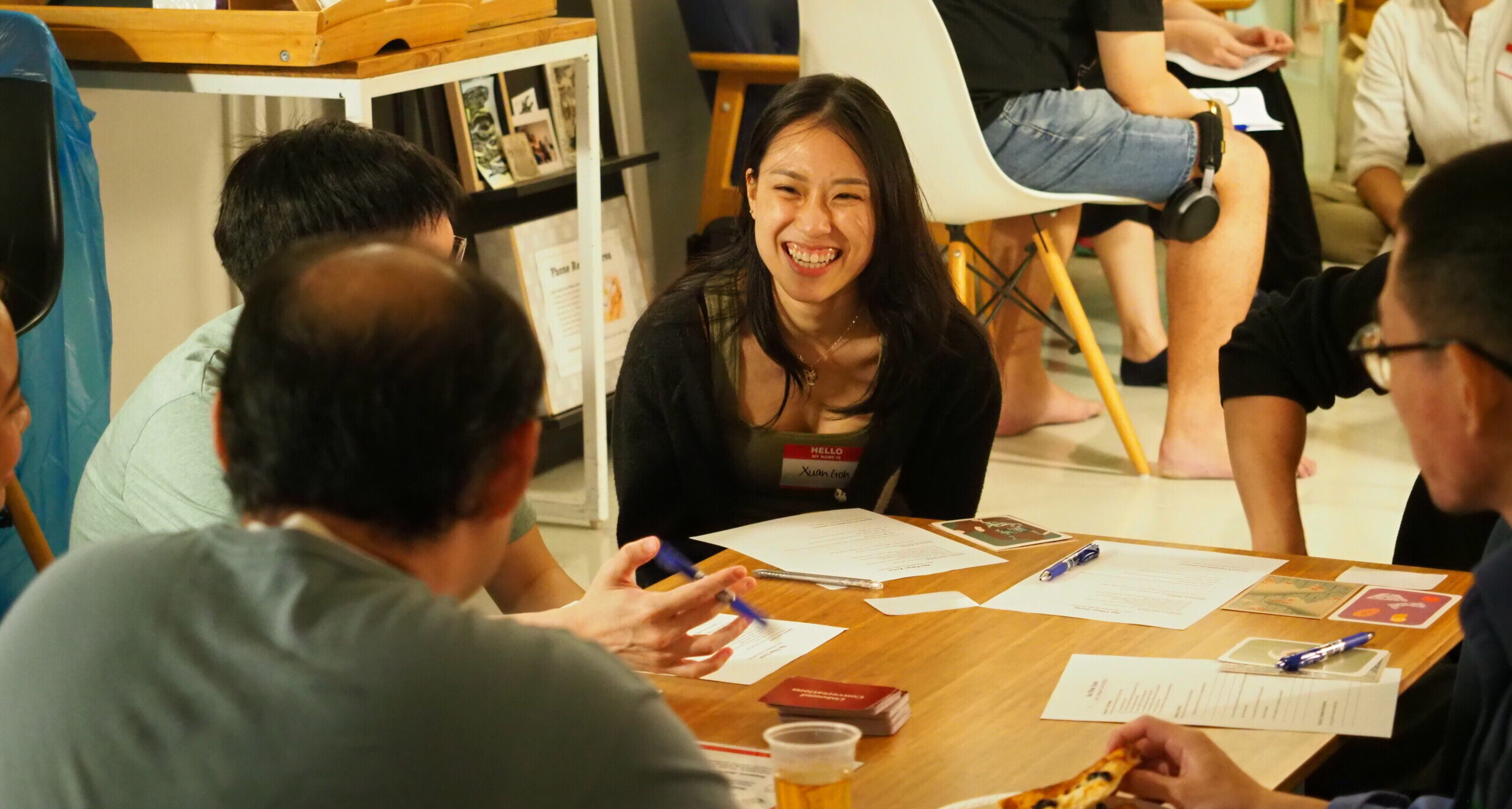|
Audio Version Available
|
We all live in some sort of physical pain.
Often, this is our body’s way of telling us that there is something harmful in us or that there is tissue damage somewhere.
While this is true for acute pain (occurring for less than three to six months), it’s not the same for chronic pain.
Chronic pain often persists beyond the expected healing time of an injury. It is less about tissue damage and more about the sensitivity of the nervous system and “non tissue-related factors”.
In chronic pain, pain signals are not a warning of physical damage. Instead, they are normal sensations that have been misinterpreted by the brain as “pain”.
Do you, for example, suffer from an aching lower back “most of the time”?

If you suffer from chronic pain, you are not alone.
The World Health Organisation estimates that about one in five (22%) people worldwide live with chronic pain. In Singapore, that number is slightly less than 1 in 10 (9%).
Being in pain is a physical discomfort, but more than that, living in chronic pain takes an emotional and psychological toll as well.
It affects your quality of life, mood and relationships with others. Those living with chronic pain show six times more psychological distress than the average person; in fact four in 10 chronic pain sufferers report symptoms of anxiety or depression.
Dealing with chronic pain

So how do we deal with chronic pain?
We fix acute pain by resting the affected area, but ironically, this doesn’t work that well for chronic cases.
Prolonged rest to deal with chronic pain can make muscles and joints weaker. As you become less active, fitness levels fall and exercise becomes more of a strain — causing more pain.
What about painkillers? Pharmaceutical solutions may work, but it’s not a long-term solution.
What other strategies have you tried? How effective have they been in dealing with your condition?
Radical approach

How’s this for a radical reset? Instead of trying to remove the pain or avoid it, learn to accept it.
You see, we are taught through our personal experiences and social cues that all pain must be avoided at all costs.
But what can you do when avoidance doesn’t seem to solve the issue?
In dealing with chronic pain, the actual pain sensation isn’t the issue: It is how we deal with the pain that matters.
In other words, our goal becomes not to eliminate the pain, but to get rid of the suffering that comes with it.
In other words, I could be in pain, but I don’t need to suffer through it.
Suffering stems from our fundamental need for control over the situation, ourselves, our body. What if we learn to let go of that control and learn to accept things we cannot change?
This is where understanding the psychology of pain comes in.
Pain psychologists who work with chronic pain sufferers use methods such as cognitive and behavioural therapy or acceptance and commitment therapy to help clients break out from the vicious cycle.
Types of chronic pain therapy

Pain acceptance: In chronic pain situations, trying to get rid of the pain may serve to perpetuate the problem and prolong (or even exacerbate!) the pain.
Pain acceptance is being willing to lean into the pain and to engage it, rather than struggling with it.
It is not about tolerating pain or pushing through with willpower. Neither is it about liking pain (sorry, no masochists here!).
Rather, it is a process of learning to notice pain for what it is and being able to make space for it in your life without judgement or reaction. This is linked to a method called gradual exposure, which is a way of managing our phobia of pain.
By slowly exposing yourself to feared situations that could trigger pain, you can learn to increase your tolerance level, one step at a time.
While this is easier said than done, it is nevertheless something that can be achieved, albeit with proper guidance and patience.
Other stories you might like






I worked with a patient named Jenny, 35, who has a five-year-old daughter.
Before she started therapy, due to her chronic pain, she had to give up spending time with her daughter, whom she loves dearly.
Through therapy, she learnt to apply pain acceptance in certain situations where she found something more important than her pain to focus on.
For example, Jenny’s daughter recently had a piano recital. Previously, Jenny would have skipped the event because sitting through the two-hour performance would have been overwhelming for her back pain.
Instead, she turned up her “acceptance dial” and told herself that she was going to embrace the pain and bring it with her for the recital because being there for her daughter was more important.
After the performance was over, she turned her acceptance dial back down, went home and lay down for a few hours to rest.
In this case, Jenny allowed herself to accept her pain for a limited time, in a particular situation, for something she valued.
Learning that she could control her response to pain for a greater purpose was important for her mental wellness and morale in dealing with her condition.

Managing negative thought processes: We often have a negative reaction to pain because of unhelpful thoughts.
Of course, no one in their right mind welcomes pain, but take note of what goes through your mind when you are in pain:
“Why me? There it comes again, my day is going to be ruined.”
“I am going to be like this forever and this makes me feel so hopeless.”
Sound familiar?
While having these thoughts are normal, learn to recognise their effects on you: Do they make you feel even worse? If so, why dwell on them?
Therapy can help change these negative thoughts into more helpful ones or teach you how to distance yourself so that they do not control your behaviour.
Going back to Jenny’s case, we found that she had to deal with a lot of negative thoughts that affected her mood.
She shared with me that she kept thinking “I am a bad mother”, or “I’m useless, I can’t even take care of my daughter”. Her pain had caused her to lose her sense of worth.
During our sessions, she learnt to take a step back and to reframe her negative thoughts into more realistic expectations.
With guidance, she was able to see that she showed love for her daughter in other ways, like preparing her meals. Her balanced perspective helped to improve her mood and stop her believing that she was a “bad mother”.

Relaxation: Therapists also teach techniques such as diaphragmatic breathing, progressive muscle relaxation and mindful breathing. These methods can reverse the body’s automatic stress response and help you relax your muscles, releasing tension in your body.
This is a simple mindfulness breathing activity to try:
- Find a quiet place.
- Set a time limit. For starters, set it for five minutes and gradually increase it as you get used to the technique.
- Sit or lie down, whichever makes you comfortable. Take note of your body.
- Feel your breath as you breathe in and out. Breath in slowly for three beats (1,2,3) and out for five (1,2,3,4,5).
- Focus on your breathing. Allow your mind to wander but when you do, gently bring your attention back to your breathing.
You might think it’s a little silly to “learn how to breathe” since we do it naturally all the time but breathing slowly and mindfully is a technique that needs time and practice.
Changing your mind

Learning to accept your pain is the first step to freeing yourself from it.
With acceptance comes freedom to choose the life you want to live rather than being controlled by pain.
Here’s my challenge to you: Imagine one thing that you want to do, but you haven’t dared to, because of the pain?
Take steps to achieve it. It is possible, through time, persistence, patience and therapy.
It’s not a quick fix, but it is a step forward to achieving a (relatively) pain-free life!
If you like what you read, follow us on Twitter and Google News to get the latest updates.


